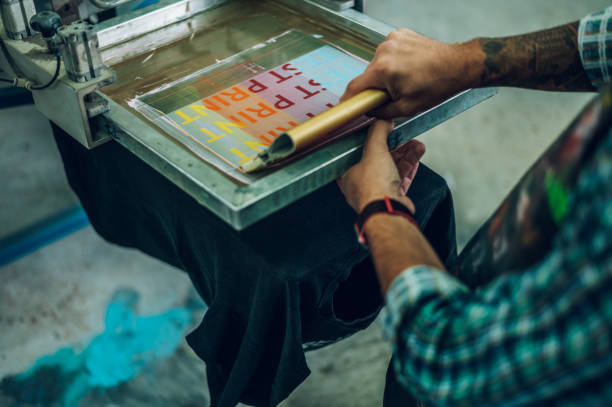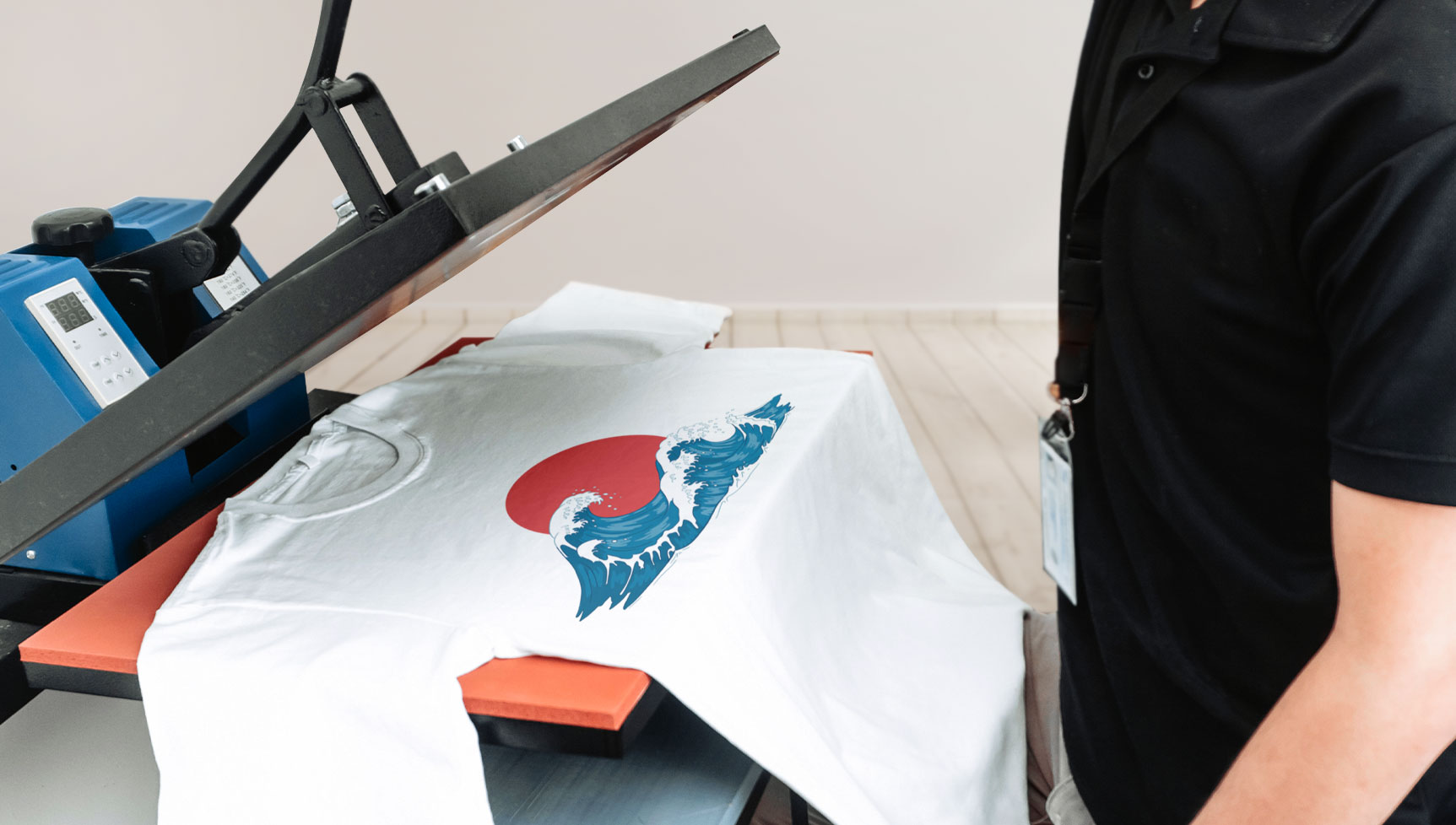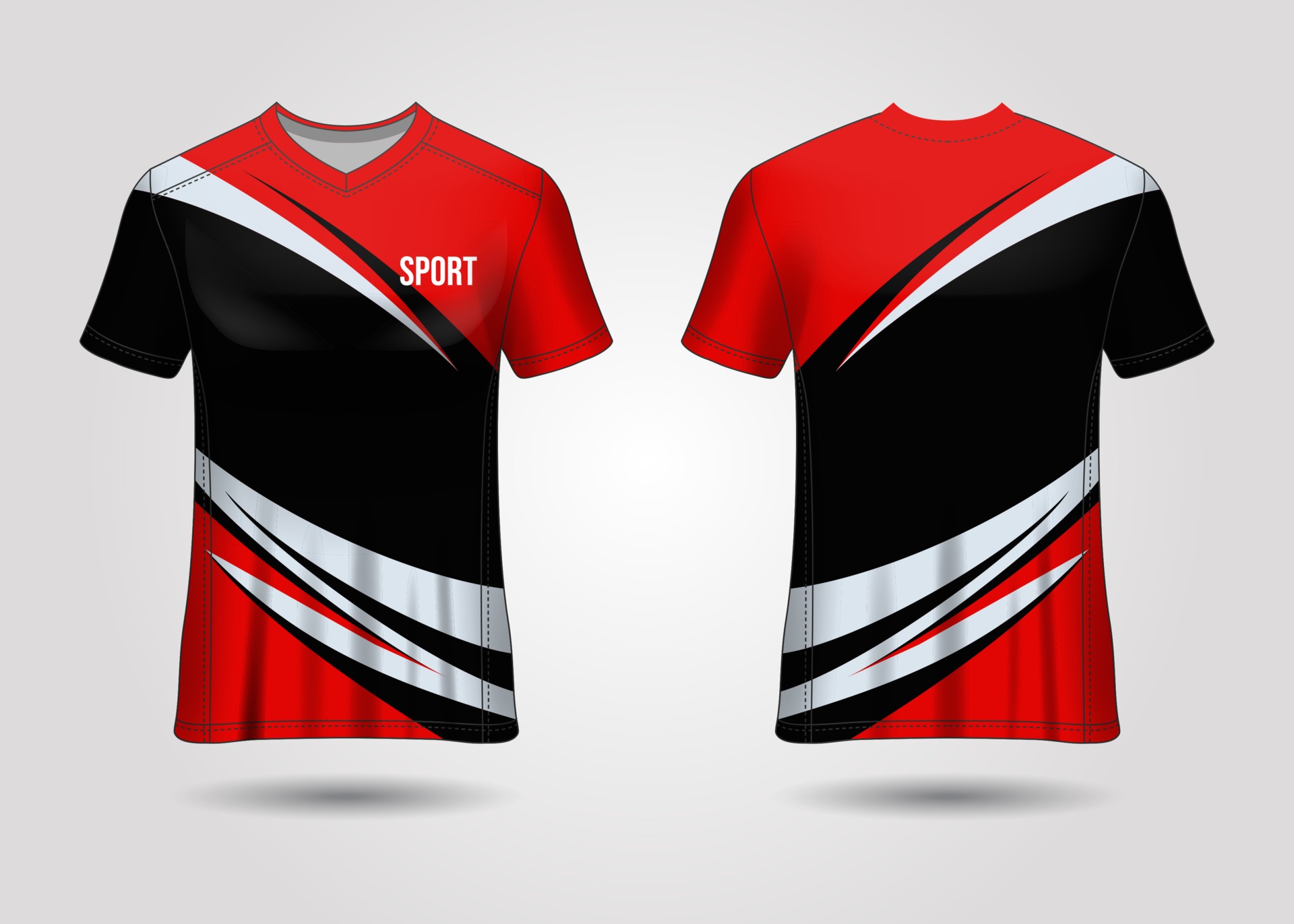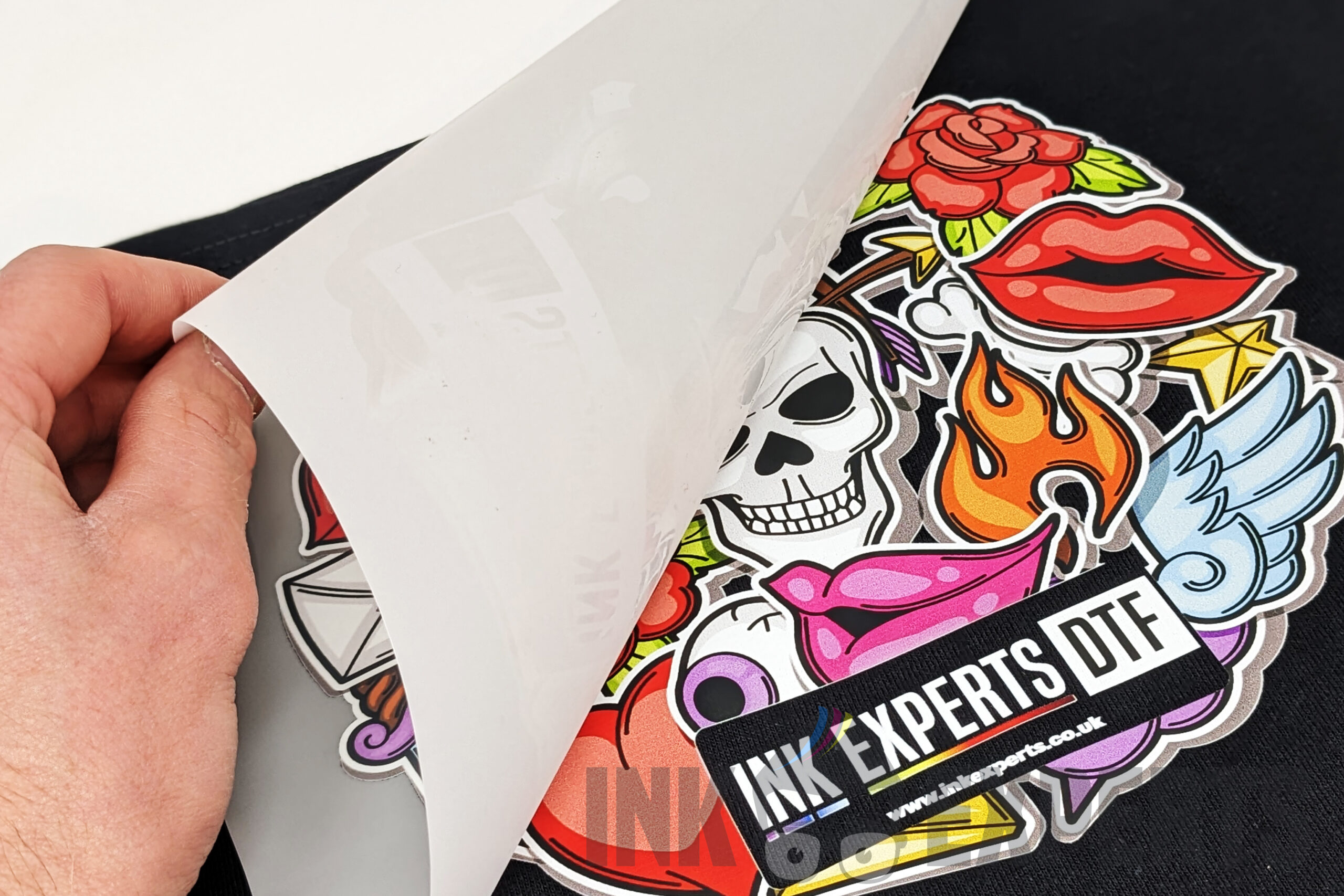Types of printing
Screen/Rubber Printing
Screen printing, commonly known as Rubber printing in India, is a versatile printing technique widely utilized for transferring designs onto surfaces like fabric, paper, wood, metal, and plastic. The process begins with creating a design, which is then transferred onto a mesh screen coated with a light-sensitive emulsion. After exposure to ultraviolet light, the unexposed areas of the emulsion are washed away, leaving behind a stencil of the design on the screen. The screen is then mounted onto a printing press, and ink is applied and pushed through the mesh onto the substrate using a squeegee. Each color in the design requires a separate screen, and the process is repeated for each color with precise registration. Finally, the printed substrate is dried to cure the ink, resulting in vibrant and durable prints suitable for various applications in India's apparel, signage, and promotional industries.

Sublimation Printing

Sublimation printing is a specialized printing technique widely used in India for creating vibrant and durable designs on polyester-based materials like garments, mugs, and other promotional items. The process involves printing designs onto special sublimation transfer paper using sublimation inks, which have the unique property of converting from a solid to a gas under heat and pressure without passing through a liquid phase. These printed designs are then transferred onto the substrate using a heat press, where the heat and pressure cause the sublimation inks to bond with the polyester fibers, resulting in long-lasting, high-quality prints that are resistant to fading and washing. Sublimation printing offers the advantage of full-color printing with intricate details, making it a popular choice for personalized and custom products in the Indian market.
Full Sublimation Printing
Full sublimation printing, commonly practiced in India, is a process where designs are printed onto specially coated sublimation transfer paper using sublimation inks. The designs are then transferred onto polyester-based materials, such as garments, mugs, and other promotional items, using a heat press. During the transfer process, heat and pressure cause the sublimation inks to transform from a solid to a gas state without passing through a liquid phase, bonding them permanently to the polyester fibers. This results in vibrant, long-lasting prints that are resistant to fading, cracking, or peeling even after multiple washes. Full sublimation printing allows for intricate designs with a wide range of colors and details, making it a preferred choice for personalized and custom products in the Indian market, especially in sports apparel, corporate branding, and gifting sectors.

Direct to Film (DTF) Printing

Direct to Film (DTF) printing, a relatively new digital printing technology gaining popularity in India, involves printing designs directly onto a special film using a compatible inkjet printer equipped with DTF inks. The printed design is then cured with a heat press to dry the ink. Once cured, the design is transferred from the film onto the desired substrate using a heat press. Unlike traditional methods like screen printing or sublimation, DTF printing offers greater flexibility in terms of materials, allowing for printing on various fabrics, including cotton, polyester, and blends. This method produces vibrant and detailed prints with excellent color saturation and durability, making it suitable for a wide range of applications such as apparel, accessories, and promotional items. Additionally, DTF printing is relatively cost-effective and efficient, making it an attractive option for small to medium-scale businesses in India looking for high-quality customization solutions.
Embroidery
Embroidery, a traditional and widely practiced craft in India, involves decorating fabric with needle and thread to create intricate designs and patterns. This intricate art form is often passed down through generations and holds significant cultural and artistic value in the country. The process begins with transferring a design onto fabric using techniques such as tracing or printing. Skilled artisans then use various types of stitches, including satin stitch, chain stitch, and running stitch, to fill in the design and add texture and dimension. Embroidery in India encompasses a diverse range of styles and techniques, with each region known for its unique motifs and embellishments, such as zardozi, chikankari, and kantha. This craftsmanship is employed to adorn a wide array of textiles, including sarees, salwar suits, shawls, and home furnishings, showcasing the rich cultural heritage and artistic prowess of Indian embroidery.

Difference between all these methods
Screen Printing
- Screen printing involves transferring designs using screens made of fine mesh and a stencil.
- Ink is pushed through the mesh onto the substrate using a squeegee.
- Rubber printing uses rubber-based inks for a raised, textured effect.
DTF Printing
- Designs are printed directly onto a special film using an inkjet printer equipped with DTF inks.
- The printed design is transferred onto the substrate using a heat press.
- Offers flexibility in materials and produces vibrant, detailed prints with high-quality results.
Sublimation Printng
- Designs are printed onto sublimation transfer paper using special inks.
- When subjected to heat and pressure, these inks convert from a solid to a gas and bond with polyester-based materials.
- Results in vibrant and durable prints suitable for various applications.
Full Sublimation Printng
- Entire garments or substrates are sublimated, allowing for seamless designs with no color limitations.
- The ink permeates the entire material, ensuring vibrant and long-lasting prints.
- Ideal for complex and colorful designs on polyester-based materials.
Embroidery
- Involves decorating fabric with needle and thread to create intricate designs and patterns.
- Various stitches and techniques such as satin stitch, chain stitch, and running stitch are used.
- Holds significant cultural and artistic value in India, used to adorn garments and home furnishings with richly textured designs.